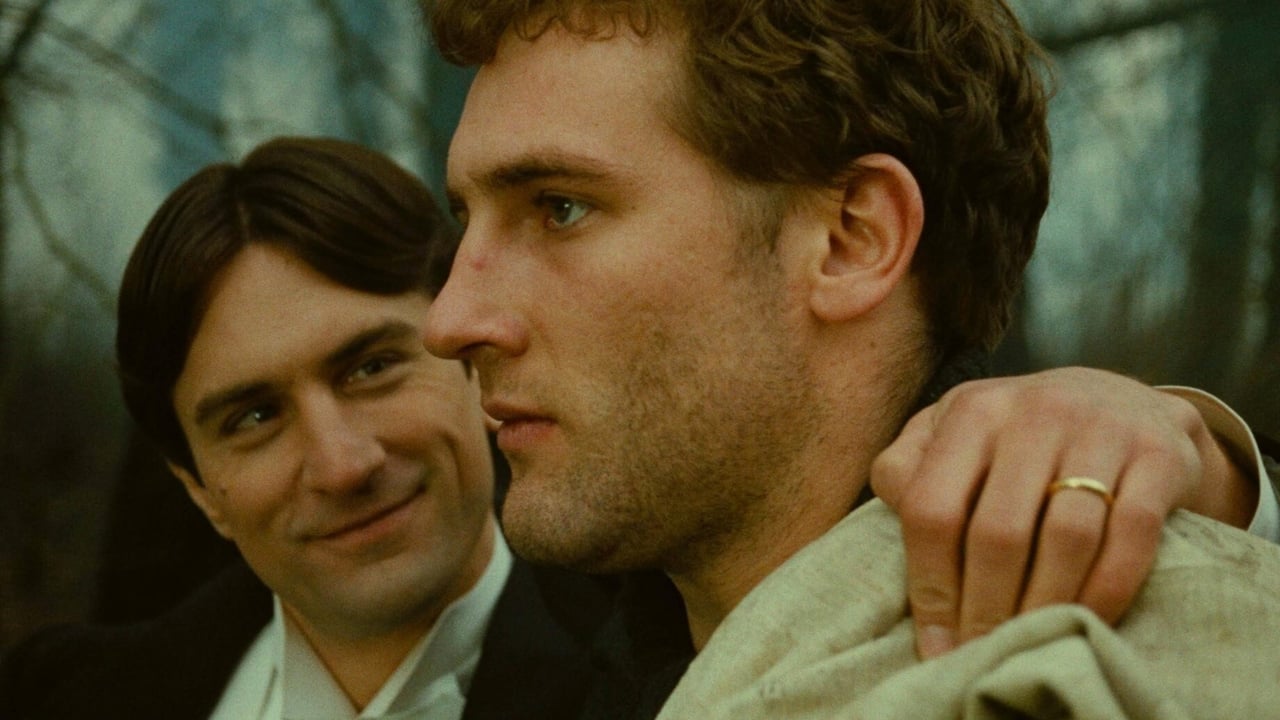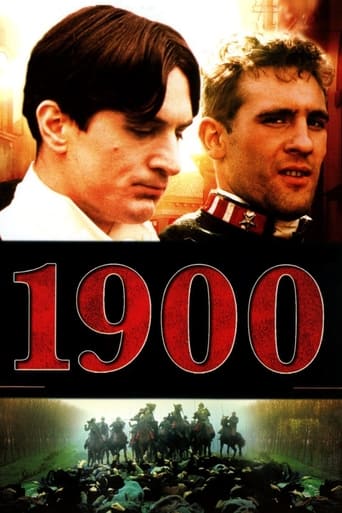

It’s sentimental, ridiculously long and only occasionally funny
... View MoreThe joyful confection is coated in a sparkly gloss, bright enough to gleam from the darkest, most cynical corners.
... View MoreAll of these films share one commonality, that being a kind of emotional center that humanizes a cast of monsters.
... View MoreActress is magnificent and exudes a hypnotic screen presence in this affecting drama.
... View MoreBertolucci again shows he is simply following in the footsteps of his earlier mentor Pasolini. Both these Italians continually proved they were little more than makers of perverse movies - displaying a heavy leaning towards paedophilia, obscenity obsessed sexuality and ugly violence. This offering from Bertolucci grinds in at a stupefying 317mins! with even the 247min version seeming to be endlessly overblown. In typical Italian production style it occasionally sounds and looks cheap (even with Vittorio Storaro behind camera). This ultimately shallow glimpse at fascism v/s communism in the early half of the 20th cent - busies itself with superficial situations and characters of very limited interest. Glorified violence against people and animals combined with sensationalised perverse sexual details are placed above any serious historical influences - culminating in dummying down the supposedly 'important' outcome. This elephantine movie basically ends up being little more than simplistic hate revenge & grotty games being played by a typically overrated movie maker with delusions of grandeur. The big cast is nothing more than a hook for international audiences and many performances are sub-standard. Strictly for those with a 'bent' towards these types of over-ripe productions (also wastes a score by Morricone)
... View MoreHe's a dreamer , Italians know. Peter Pan. Sex. Fetisj. So, Americans,pleases, we know that Italy's history is too complicated but believe me, it's only ALLEGORY like Tarantino's Nazi Bitches...Both kids BLOW UP, insert private quirks and fetisjes ( Bertolucci's use of sex with animals, kids, of the 'godfather' is surreal, not what I know about the real farmers,and so I had to laugh...also 'the fascist + cat'.....mamma mia... THAT is NOT a fascist, but a severe psychopath u would encounter ONE in millions regardless of position or politics, even a 'commie'! This one will be forgotten in ten years. Only nice details IMO are the rural ambient, young Niro + Depardieu at their height of beauty and D. Sanda( I ADORE her) with her white horse Cocaina. Rest UNWATCHABLE, I fell asleep, which happens only with Tolkien + Harry Potter. So I rate 4.( BTW: Stefania Casini as epileptic sex-buddy Cult 70's actress, now is director/journalist )..Et voila... maybe one day he destroys it himself LOL ....keep dreaming, dreamers.Beg your pardon? Bernardo, please no DREAMERS-2 ! LOL
... View MoreOK first of all this movie is like three f###ing hours long. I've read stuff on the internet, and I know that there are different cuts of this movie and some are longer and some are shorter. But just know that this movie is like three f###ing hours long. That's like, almost more like a mini-series. Which, cool, or whatever, but just, like know that that's what you're f###ing committing to. Pretty much right away this movie reveals to you that it's going to be one of those edgy Italian movies that is gonna show you some f###ed up s##t but then be serious enough that you feel like it's a means of artistic expression, and not, you know, spectacle. Right away there's a scene with kids making fun of some woman giving birth. Whatever. It's a costume drama, you're trying to tell me that things used to be grittier and more real and s##t. Cool, I get it. But then there's like, a kid that lays under a train, and you can tell from the shot that they really got someone to lay under a train. Great, awesome. And then these kids show each other their dicks, and suddenly you're watching a movie where kids are showing each other their dicks. Great. Awesome. Thank you so much, movie. Why did I torrent this again?There are boobs, eventually. So it's this long drawn out thing. It's two dudes, and one is a peasant and one is an aristocrat, and it's their biography, with the politics and class struggle of Italy writ large as the backdrop to their relationship over the course of like five decades. That's pretty cool. This movie also likes to show lots of old people with weathered faces and dying animals and meat. Again, great and awesome. And also there's this scene where some old man massages a horse's b###hole and you watch the poop coming out of it's butt. But, I mean you're the one who wanted to watch a f###ing 70s Italian movie, I'm not sure what you were expecting. I saw online someone said that this was like the Gone With the Wind of Italy.
... View MoreWhat a shame; I had such high hopes for this film. With a cast and budget of fantastic proportions it seems the director was overwhelmed. I love epic tales of conflict and victory that I can lose myself in and become part of the story. Unfortunately this movie never develops any character to care about, there is a confusing collage of scenes some of which are breathtakingly beautiful, just no cohesion. There have been films that I didn't want to end The Godfather, The Deer Hunter, Band of Brothers. This became a bloated rambling mess that I struggled to finish. It seemed the director struggled as well never developing a storyline that could engage me and ending without ever making a statement. What a shame
... View More